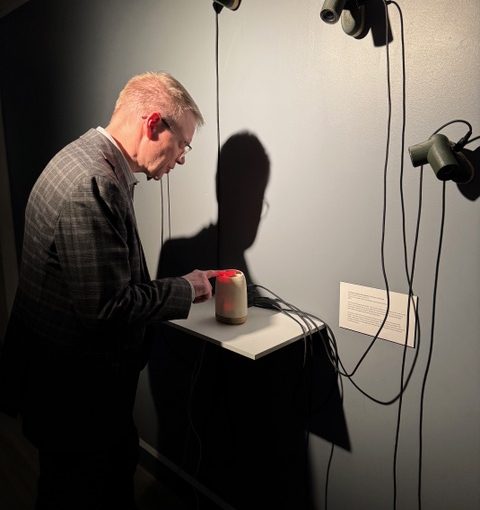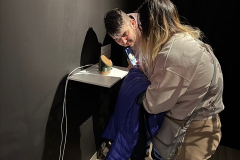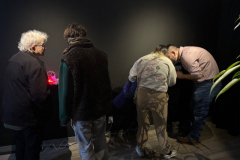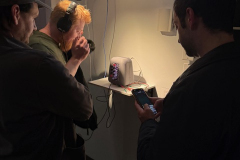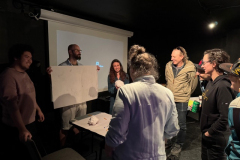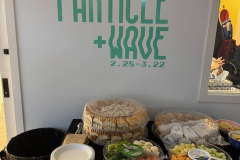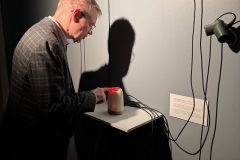In February and March, the artworks MoSS and Climate Change Smart Speakers (CCSS) were exhibited at the “Particle+Wave” media art exhibition hosted by Emmedia in Calgary, Canada. Opening on February 28, the exhibition attracted a diverse audience, including tech enthusiasts, professionals, and students. The exhibition featured international artists from France, Serbia, and Canadian cities such as Vancouver and Montreal, creating a vibrant dialogue around contemporary media art.
The response to both CCSS and MoSS was exceptionally positive, sparking engaging discussions about artificial voices, sound synthesis, climate change, artificial intelligence, and energy consumption, among other pressing topics. These conversations underscored the potential and implications of integrating advanced technology with artistic expression.
Alongside the exhibition, artist Søren Lyngsø Knudsen hosted a speculative design workshop aimed at exploring the design and conceptual development processes behind MoSS and CCSS. The goal was to stimulate critical reflections and generate new speculative concepts beneficial to humanity while fostering broader discussions on themes of technology, sustainability, surveillance, and wellbeing.
The workshop was introduced by Søren with a compelling premise: “Commercial smart objects promise to simplify and enhance everyday life, but do these objects benefit humanity in the long run? Can they truly help us, or are they perhaps achieving the opposite?”
Participants collaborated in small groups, spending approximately one hour developing innovative speculative concepts. One intriguing concept involved a smart device capable of dynamically delaying audio signals to enhance conversational clarity between two people. Another inventive proposal envisioned a smart entity inspired by Japanese folklore—an intelligent spirit caring for and maintaining a home, sustained simply by absorbing moisture from its owner’s touch, provided they treat it kindly.
A third provocative concept explored a smart-object explicitly designed to discourage the usage of other smart devices. This object would achieve its goal through methods like creating monochromatic lighting to drain the vibrancy from daily life or reflecting a distorted image of users to provoke discomfort or unease.
After an hour of creative brainstorming and sketching, each group presented their ideas, sparking vibrant discussions, feedback, and further reflection.
Overall, the “Particle+Wave” exhibition and accompanying speculative design workshop not only showcased the profound intersections between art, technology, and critical discourse but also highlighted the importance of speculative thinking in addressing our collective futures.
